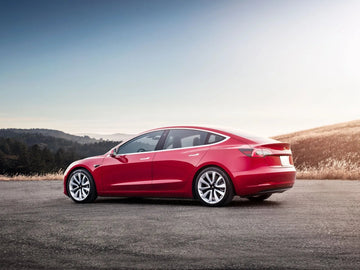Tesla is forging ahead in the realm of home energy solutions with the highly anticipated launch of Powerwall 3, a product poised to revolutionize sustainable home energy systems. Official details have finally emerged, offering a glimpse into the capabilities and features of this next-generation home battery.
What Sets It Apart
Building upon the success of its predecessors, Powerwall 3 retains the same 13.5 kWh energy capacity as Powerwall 2. However, the standout improvement lies in its power output, boasting a continuous power of 11.5 kW, a significant increase from the 10 kW peak of the Powerwall 2.
Furthermore, the on-grid power of the Powerwall 3 has seen a substantial boost, soaring from 5.8 kVA (4.64 kW) to 11.5 kW, maintaining this level continuously.
Prospective buyers should take note of the enhanced scalability; a single unit can be easily expanded to meet growing energy demands, offering a maximum additional capacity of 40.5 kWh per unit. Nevertheless, Tesla appears to be streamlining its operations by directing new solar installations toward the Powerwall 3, while recommending Powerwall 2 for augmenting existing solar setups.
Design and Installation
Tesla has slightly revamped the Powerwall 3, resulting in a more compact yet heavier design compared to its predecessor. Measuring 43.25 inches in length, 24 inches in width, and 7.6 inches in depth, and weighing in at 287 lbs, it aims to combine power with aesthetics. Installation promises seamless backup transitions and resilience against floods and dust, adhering to North American safety and EMI standards.
Despite generating buzz and some users reporting early installations, the widespread availability of the Powerwall 3 is scheduled for 2024. Additionally, it will not be eligible for the $500 rebate offer currently applicable to Powerwall 2 and Powerwall+ installations occurring between June 15, 2023, and October 31, 2023.
Comparing Powerwall 2 and Powerwall 3
| Feature | Powerwall 2 | Powerwall 3 |
|---|---|---|
| Energy Capacity | 13.5 kWh | 13.5 kWh |
| On-Grid Power | 5.8 kVA continuous | 11.5 kW continuous |
| Backup Power | 10 kW peak, 106A LRA motor start | 11.5 kW continuous, 150 LRA motor start |
| Size (L x W x D) | 45.30 in x 29.6 in x 5.75 in | 43.25 in x 24.0 in x 7.60 in |
| Weight | 251.3 lbs | 287 lbs |
| Warranty | 10 years | 10 years |
| Scalability | Single size | Up to 40.5 kWh max addition per unit |
| Inverter | Not included | Included (6 solar inputs) |
Built-in Inverter
One of the key distinguishing features is the fully integrated solar inverter, capable of handling up to six solar inputs, enabling high-efficiency direct solar connections. This move underscores Tesla's dedication to advancing clean energy solutions, setting an impressive benchmark in solar-to-grid energy conversion efficiency, pegged at 97.5%.
Compatibility and Expansion Possibilities
While designed for the future, the Powerwall 3 takes a step back in terms of compatibility with existing setups. Tesla has clarified that this new release will not be compatible with Powerwall 2 units or other solar inverters, signaling a clear path that Tesla envisions for its users—a one-brand ecosystem promising seamless integration and efficiency.
As Tesla gears up to introduce the Powerwall 3, prospective users are eager to explore the transformative features it brings to the home energy landscape. The inclusion of an integrated solar inverter and system controller stands out, offering an efficient and versatile home energy solution. However, it's not without its limitations, particularly in terms of compatibility and financial incentives.
Tesery, dedicated to providing quality products and services to Tesla owners. The most trusted Tesla accessories shop and supplier, the choice of over 28,000 Tesla owners!














































